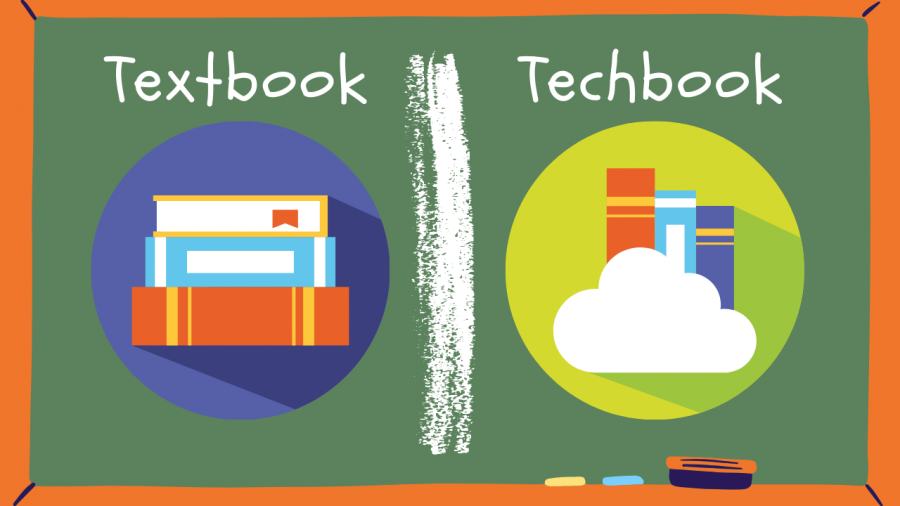Are “techbooks” a smart addition to our screentime?
Classrooms should encourage printed textbooks over digital textbooks
Digital textbooks are an online tool used in the classroom. While some believe that there are many advantages, there are also numerous disadvantages.
March 8, 2021
Five days out of seven, we are mandated to sit in front of a screen. Seven hours out of twenty-four, we learn through myriads of online platforms– Google Classroom, Quizlet, Blackboard. And this is only the bare minimum. With the increasing support for using digital study aids such as online textbooks, we end up doing more harm than good.
Not only is the time spent on a computer significantly increased due to a virtual setting, but the loads of online studying also result in damaging eyestrain. As digital elements become major components in the academic curriculum, the amount of time spent online strays farther and farther away from the recommended two hours. One particular study material contributes massively to this dilemma: digital textbooks.
While digital textbooks are lighter and more accessible than their printed counterpart, reading on a screen results in more distractions and less comprehension. According to the Australasian Journal of Educational Technology, students reading a digital text show considerably less understanding of the text compared to those who read a paper version. Supported by logistics, it is apparent that “techbooks”– despite their superficial benefits– are not as effective for understanding material as traditional textbooks. For instance, printed textbooks allow students to retain more information from diagrams and paragraphs.
Furthermore, because of the online nature of digital textbooks, there are many more opportunities for distractions. All it would take is one tiny notification for a student’s attention to be drawn away from reading. By the time the student is pulled back into studying mode, the damage is done. Details missed, diagrams skipped, vocabulary overlooked– skimming digital text provides insufficient knowledge.
In my experience, the long hours of learning followed by studying through videos and images displayed by pixels cause my eyes to tire rapidly. The glare from a digital screen can also cause massive strain on our eyes. Headaches, eye strain, eye blurriness, neck pain– the list of effects of prolonged screen time is miles long.
While some students choose to seek alternatives outside of school, such as purchasing their own physical copy of the “techbooks”, low-income families are not so lucky. Instead, because of the cost, they are forced to bear the consequences of digital textbooks. Making printed textbooks more accessible to all students should be a top priority as they are far more beneficial compared to their digital counterpart.
Instead of continuing to endorse digital textbooks, the funding used to pay for these subscriptions should be allotted towards providing students with printed textbooks– a learning resource proven to be more effective and less detrimental through numerous studies.






